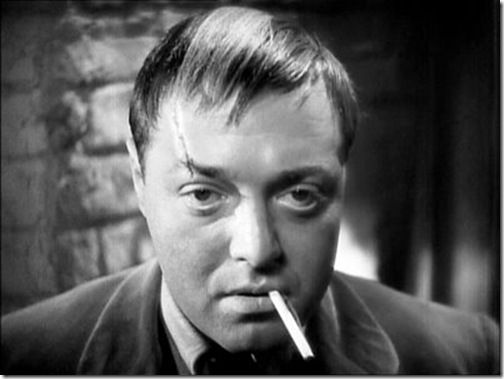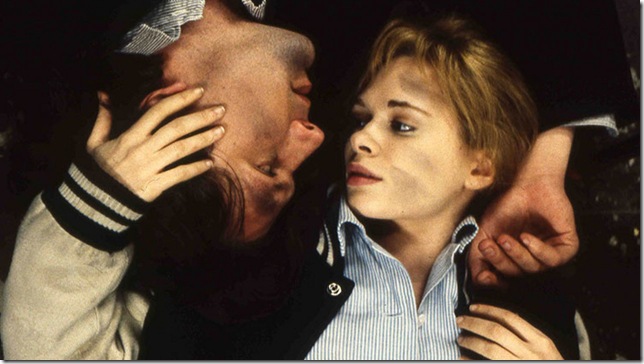Movies such as Found Memories (Film Movement, $22.46) are the reason the cinematic arts exist, accumulating its poetry, power and poignancy the way no other medium can. Borrowing from the structuralist playbook of Chantal Akerman, Brazilian director Julia Murat depicts every banal movement of Madalena (Sonia Guedes), an elderly widow whose primary purpose in life is to bake the bread for her tiny, bucolic village, which hugs railroad tracks overgrown with weeds. Murat captures her daily routine in a series of repetitive, deliberate static shots: tending to a garden near the town’s cemetery, penning letters to her deceased husband and worshipping at the squat church, alongside congregants whose numbers rarely reach double digits.
In this 19th century environment – part kibbutz and part Amish territory – materializes a young, modern, backpacking photographer named Rita (Lisa Favero) who asks to crash at Magdalena’s house for a few days. She soon disrupts the daily rhythms we’ve come to expect from Madalena, and with it the film’s own rhythms: Significantly, the only times Murat’s camera moves is when it follows Rita, a force of change in more ways than one. Her black-and-white photographs, developed in a makeshift darkroom, are spectral in nature, turning the village’s inhabitants into something like living ghosts, an appropriate metaphor for their often wordless, invisible-to-the-world subsistence.
As Rita’s relationship with Madalena and the rest of the townsfolk grows, the movie evolves into a beautiful meditation on life, death, loss, acceptance and photography. The cliché that “a picture speaks a thousand words” can apply to countless frames in both Rita’s images and Murat’s film – and has perhaps never been so apt. When movies like such as are ignored by the American distribution system, it’s a freaking travesty.
A 102-minute tone poem of pure cinema, Ron Fricke’s 70mm-shot Samsara (MPI, $24.99 Blu-ray, $19.99 DVD) is an experience made for movie theaters, not home viewing. That said, it’s hard to look away from this Blu-ray disc, presented in “8K Ultradigital HD,” making it, presumably, the best-looking disc ever produced for home video.
A wordless, meditative journey across 25 countries and five continents, Samsara shows us melting tundras and mountainous chasms, tribesmen and factory workers, baptisms and volcanic eruptions, slaughterhouses and discos, wondrous urban landscapes and the industrial debris of natural disasters. There’s an especially disturbing sequence in which an ordinary businessman, seated behind a desk, transforms before our eyes into a hideous monster fit for a Batman movie, using mud, paint and plastic bags. At its best, Samsara returns cinema to its roots as a medium for visual expressionism, creating magic through light, shadow and camera placement.
But by the time Fricke delves into glittering cityscapes – speeding up time to depict humans and their cars as the minuscule inhabitants of a giant ant colony – the film’s debt to Godfrey Reggio’s Qatsi Trilogy overwhelms whatever distinction Samsara had cultivated. Sometimes it feels as if Fricke, who shot Koyaanisqatsi for Reggio, is simply lifting ideas from his ambitious colleague. Even the film’s politics and ideas – obsessing over modern life’s accelerated fusion of the real and the synthetic – was already explored better in Reggio’s Naqoyqatsi. Samsara is too magisterial to forget, but too derivative to be profound.
Ireland is a peculiar and regressive place in John Ford’s 1952 smorgasbord The Quiet Man (Olive Films, $21.58 Blu-ray, $19.35 DVD), as John Wayne’s erstwhile American pugilist Sean Thornton is about to find out. Fleeing his home – and his job – after he kills a man in the ring, he arrives by train and seeks out Innishmore, with the intent of repurchasing his childhood home. The prodigal scion of a beloved industrialist, Sean makes friends with every louse on the block except Victor McLaglen’s Will Danaher, which is a shame, because he’d love a romp in his sleeping bag with Will’s fetching sister Mary Kate (Maureen O’Hara), a scarlet-haired beauty with a yellow bonnet and eyes on her brother’s generous dowry. Things don’t move at a pace similar to Sean’s hometown of Pittsburgh, but at least there’s plenty of alcohol, and even the horses know to stop at every pub.
John Ford, himself a stranger in a strange land, revels in the eccentric customs, arcane language and bizarre courting rituals of his own private Ireland. And he makes the best of its rolling mountains, crystal waters and endless greenery, creating some of the most stunningly bucolic on-location imagery ever filmed. Each frame in this morality drama/romantic comedy hybrid looks like a painting, and the colors positively pop off the screen, thanks to this superlative Blu-ray transfer. Blessed with one of the best first kisses and one of the best brawls in movie history, The Quiet Man is a masterpiece worth rediscovering – and watching again and again.
Even in 1934, Alfred Hitchcock’s career was already due for a rebirth, as he admitted to Francois Truffaut many years later. Coming back from failures such as Number 17 and Waltzes From Vienna, Hitch delivered one of the great classics of his early British period, The Man Who Knew Too Much (Criterion, $24.99). Based on a 1922 detective story by G.K. Chesterton, the movie would be remade, and improved, by Hitchcock in the 1956 version most audiences remember; this early success, however, planted its seeds, as well as the seeds of Hitchcock’s style, neuroses and ordinary-man, extraordinary-circumstances drama that he would come to cultivate.
Leslie Banks plays the titular man, whose daughter is kidnapped by a group of assassins after he unwittingly discovers a plot to kill a politician. The movie wastes no time setting the scene, the stakes and the search, providing an economic, suspenseful thriller in all of 75 minutes. Peter Lorre is especially memorable as a strange, maniacal conspirator with blond highlights in his unctuous hair.
Hitchcock’s editing and staging would prove to be some of his boldest, shock-cutting away to loud, brash objects like a model train set in motion and a set of giant, ghastly teeth above a corrupt dentist’s storefront. Deaths are treated with sobriety, simplicity and a commendable lack of sensationalism, especially in the climactic shootout in London’s East End, where the deliberate, constant clangor of spasmodic gunfire dominates the soundtrack, effectively taking all the glamour and melodrama out of a gun battle.
This edition includes some exceptional extras, such as an enlightening video appreciation from Guillermo Del Toro and a 25-minute audio sample from Hitchcock’s interview with Truffaut, which I referenced above.
In the revealing, uncomfortable documentary Whores’ Glory (Kino, $29.96), German director Michael Glawogger presents a triptych of prostitution exposés. He takes viewers, respectively, to the lurid fast-food-menu conveniences of Bangkok, where porcelain-skinned hookers sit behind a glass partition for johns to ogle and select; to the penurious hovels of Bangladesh, where desperate, tearful prostitutes voice sorrow at their lot in life; to the skuzzy hedonism of Reynosa, Mexico, whose whores channel the untapped energy of the Wild West. These three variations on a theme, while exhibiting their own cultural quirks and peculiarities, share all too much in common, namely the exploitation of underage girls in an environment that is demeaning to say the least – in Bangkok, they’re basically chattel.
Without editorializing, Glawogger hits a lot of socially conscious points: the lack of options for women in patriarchal societies, the self-perpetuating cycles of prostitution across generations, and the hypocritical nature of men who would spit on these girls in public and lust after them in private. We know all of this, of course, and if there is a criticism to be aimed at Glawogger, it’s that he tells us what we want to hear about the hooking life, spending a bit too long in the pity and degradation of Bangladesh. But rarely has the subject matter been explored with such seriousness – and such disturbing clarity.
Thanks to the familiar legal tangles of home-video distribution, Hal Hartley’s Trust has survived the past 23 years on nothing but a pan-and-scan VHS copy. This was a shoddy way to see such a groundbreaking independent film, a picture that put its director as well as its two stars, Martin Donovan and Adrienne Shelly, on the indie-cinema map.
Rescuing it from obscurity and restoring its greatness is Olive Films, which has released a lovely Blu-ray transfer ($24.99) as well as a long-belated DVD ($19.99). I connected with this masterpiece in college, commiserating with its two fringe lovers: Donovan’s hotheaded electronics repairman and Shelly’s pregnant high-school dropout, who meet by chance and escape their hellish domestic environments, he with his pinned hand grenade and she with her detested spectacles and a thesaurus, the better to keep up with his Marxist diction.
Hartley is the kind of outsider artist who is meant to be discovered in college, but his films play, and age, just as well long after academia ceases. His dialogue looks back on the fast-talking screwball comedies of Howard Hawks and looks ahead to Aaron Sorkin, but it’s arguably more interesting that the latter, because it’s so strange – filled as it is with non-sequiturs and linguistic surprises. Shot through with Hartley’s trademark economy of style, Trust is perched beautifully at the intersection of social realism and absurdist fantasy, gradually evolving into a sharp satire on love, marriage, working life and conformity. It remains blazingly original, elegantly crafted and very funny.





